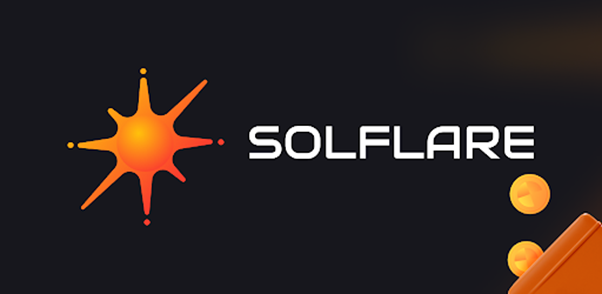So I was fiddling with my crypto setup the other day, trying to juggle convenience and security—because, honestly, that’s the holy grail in this space. My instinct told me there had to be a better way to manage Solana tokens while keeping my Ledger hardware wallet in the loop. Something felt off about using multiple apps that just didn’t talk to each other smoothly.
Whoa! Enter the solflare wallet. At first glance, it seemed like just another wallet, but digging deeper, I realized it’s actually a pretty slick bridge between user-friendly interfaces and robust security, especially if you’re into Solana DeFi. The way it integrates with Ledger devices is not just an afterthought—it’s baked in.
Here’s the thing. Not all Solana wallets play nice with Ledger hardware, which is a dealbreaker for many serious users. I mean, if you’re gonna keep your funds safe, you want that extra layer of physical security. Solflare nails that, making it straightforward without feeling clunky.
To be honest, I’m biased because I like wallets that don’t make me jump through hoops. Solflare’s design is intuitive but has enough advanced features to satisfy power users. You can stake, swap, and interact with DeFi protocols directly. That’s a pretty sweet combo, right?
But wait—there’s more to unpack here, especially about how it handles DeFi on Solana.
DeFi on Solana is booming, and the speed and low fees are a big part of the appeal. Still, navigating this landscape without a wallet that supports the ecosystem’s nuances can be frustrating. Solflare seems to have grown alongside Solana’s DeFi scene, adapting to support features like staking SOL, managing NFTs, and connecting to Solana-based DEXs without missing a beat.
Honestly, I was skeptical at first. Many wallets promise seamless DeFi integration but end up being either too basic or overly complex. Solflare strikes that balance, letting you dive into DeFi while keeping things manageable.
Check this out—when you connect your Ledger through Solflare, your private keys never leave the hardware device. This means you can approve transactions confidently, without worrying about phishing or malware sneaking in. That’s huge, because the last thing you want is some sketchy script draining your wallet while you’re busy juggling work emails.
Something else that bugs me: some wallets clutter the interface with features that most users never touch. Solflare keeps it streamlined. You don’t get overwhelmed, but the advanced tools are just a click away. It’s like having a Swiss Army knife that unfolds only when you need a specific tool.
On one hand, I appreciate the simplicity; though actually, the deeper you go, the more you realize how much power is under the hood. This wallet isn’t just for beginners—it scales with your growing crypto skills.

Why Ledger Support Matters More Than Ever
Okay, so check this out—Ledger devices have become the gold standard for cold storage. Pairing them with an easy-to-use software wallet is a game changer. Solflare does this well, bridging the gap without compromising security. My first impression was that this would be a clunky experience, but nope—it’s surprisingly smooth.
But here’s where it gets interesting: many wallets claim to support Ledger, but the actual integration is patchy. Transactions can fail, or you end up manually copying addresses. Solflare automates much of that, reducing the chance for human error.
I’m not 100% sure, but from what I’ve seen, this wallet also supports multiple Solana tokens and NFTs seamlessly within the same interface, which is a big plus for collectors and DeFi users alike.
There’s a natural flow when you move from managing simple SOL balances to interacting with complex DeFi protocols. The wallet abstracts away many technical hurdles but still lets you peek under the hood.
Really? Yeah. For example, you can stake your SOL right in the wallet interface without visiting a separate staking portal. That saves time and reduces risk—because you’re not hopping between sites where phishing scams lurk.
Now, I’ll be honest: the wallet isn’t perfect. Sometimes the network latency on Solana can cause delays, and transaction fees, while low, still fluctuate. Plus, if you’re new to hardware wallets, the initial setup with Ledger can feel a bit daunting. But I guess that’s the price of security.
Initially, I thought software wallets were inherently risky for serious users, but Solflare’s approach made me rethink that. By offloading key signing to the Ledger device, the software acts more like a secure window than a vulnerable gatekeeper.
Oh, and by the way, Solflare also supports mobile apps, which means you can keep tabs on your portfolio on the go. The mobile experience is surprisingly robust, though I prefer the desktop version for heavy DeFi interactions.
Something I didn’t expect? The wallet community is pretty active. There’s ongoing development and regular updates, which means bugs get squashed faster than in some other projects I’ve tried. That’s reassuring in the ever-shifting world of crypto.
My gut says this kind of dedicated support is what will keep Solflare relevant as Solana’s ecosystem matures.
Solflare and the Future of Solana Wallets
So, where does this all lead? Well, wallets like Solflare are setting the bar for what users expect: security without sacrificing usability. The Solana network itself is evolving fast, and wallets need to keep up.
Here’s a thought: as DeFi protocols grow more complex, wallet UX will become more crucial. Solflare’s current blend of simplicity and advanced features might be a blueprint for others.
One thing I wonder about, though, is how well Solflare will handle the inevitable surge in demand and more sophisticated threats. The crypto space is a bit like the Wild West, and no solution can be 100% bulletproof.
Still, I’m optimistic. The fact that Solflare embraces Ledger integration means it’s prioritizing security from the ground up, which isn’t always the case. For users who want to dive into Solana DeFi but dread the usual security risks, this wallet is a solid bet.
Really, the best advice I can give is to try it yourself. If you care about keeping your funds safe while exploring the rich Solana DeFi landscape, the solflare wallet deserves a spot in your toolkit.
Sometimes, it’s the little conveniences that make the biggest difference. For me, that’s been Solflare’s smooth Ledger support and its balance of usability and power. But hey—your mileage may vary, and the crypto world keeps changing every day.
So yeah, I’ll keep an eye on it, and you should too.
